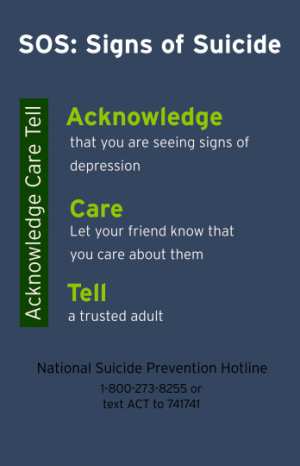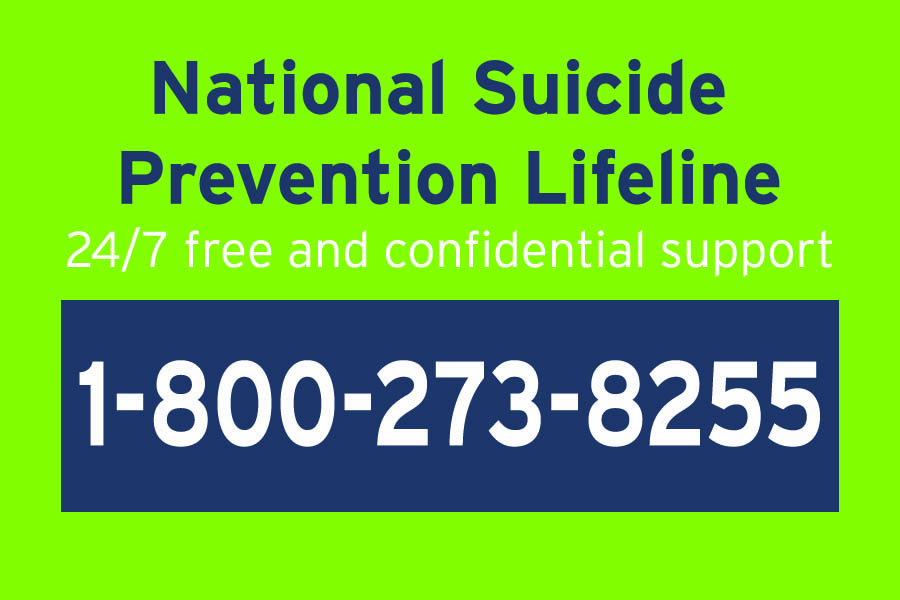SOS: Signs of Suicide
Students discuss signs of suicide using the SOS program through MindWise Innovations.
PHOTO | Maleah Downton
The National Suicide Prevention Lifeline is a free confidential resource to anyone in need of help and support or knows someone who is during any mental health crisis. The lifeline is open 24/7.

To educate students and bring awareness to suicide, the school counselors had faculty members lead guided discussions about the signs of suicide with sophomore and senior students in small groups Thursday, Feb. 13.
During the program, students watched short videos from MindWise Innovations that shared stories from once suicidal teens and their journey to getting help. The videos also had example scenarios of what to do if you believe someone is showing signs of suicide. The Signs of Suicide program is a school-based prevention program for middle and high school students. The program was chosen based on its effectiveness, use around the country and post-evaluation research, according to counselor Karen Brown Phillips. Freshmen and juniors were first introduced to the program Jan. 23.
“I thought it was very informing and good to hear if your friends are in that situation or if you’re in the situation,” senior Caroline Knopke said.
An important aspect students learned, according to Phillips, is that suicide is not just linked to one cause; several factors lead to adolescents at risk. Listen, read and watch are the three bug indications that someone is at risk, according to the SOS program. Phrases such as “I don’t want to be here anymore” or “Don’t worry, you won’t have to worry about me much longer” can signal to others that a person is contemplating suicide. For parents, SOS says that it can be helpful to read their child’s writing assignments or what they post on social media because teens will commonly share their feelings on there. Lastly, SOS encourages people to watch for big changes in moods, such as withdrawing themselves from social events, substance abuse and lack of interest in things they usually enjoy.
“I thought it could have been a little more interactive other than just discussions, but overall I thought it was good for the first time our school has done something like this,” senior Claire Maguire said.
In preparation, teachers went through training to learn more about identifying the signs of depression, anxiety, how they can be a good support, how they can respond and how they can become a trusted adult if someone were to share something with them. Two faculty members were assigned to each room to facilitate the discussions. The goal of the event, according to Phillips, was to initiate conversation and bring increased awareness.
“The purpose is education,” Phillips said. “We liked this program because it has education pieces for teachers and students and parents. So, the idea would be that we’re all learning together.”



